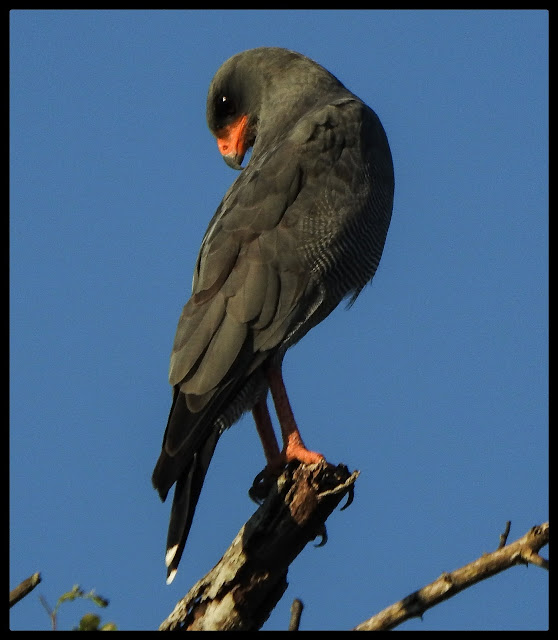The African buffalo (Syncerus caffer) is a large sub-Saharan African bovine. There are five subspecies that are recognized as valid by most authorities:
Syncerus caffer caffer, the Cape buffalo, is the nominotypical subspecies, as well as the largest, found in Southern and East Africa.
S. c. nanus, the forest buffalo, is the smallest subspecies, common in forest areas of Central and West Africa
S. c. brachyceros, the Sudan buffalo, a smaller version of the Cape buffalo, found in the drier, northern areas of Central and West Africa.
S. c. aequinoctialis, the Nile Buffalo, sometimes considered identical to the Sudan buffalo, found in the drier, northern areas of East and Central Africa.
S. c. mathewsi, the mountain buffalo, a disputed subspecies from the Virunga Mountains in Central Africa.
The adult African buffalo's horns are its characteristic feature: they have fused bases, forming a continuous bone shield across the top of the head, referred to as a "boss".
The African buffalo is more closely related to other buffalo species than it is to other bovids such as American bison or domestic cattle, with its closest living relative being the Asian water buffalo. Its unpredictable temperament may be part of the reason that the African buffalo has never been domesticated, which would also explain why the African buffalo has no domesticated descendants, unlike the wild yak and wild water buffalo which are the ancestors of the domestic yak and water buffalo. Natural predators of adult African buffaloes include lions, African wild dogs, spotted hyenas, and Nile crocodiles. As one of the Big Five game animals, the Cape buffalo is a sought-after trophy in hunting.
The African buffalo is a very robust species. Its shoulder height can range from 1.0 to 1.7 m (3.3 to 5.6 ft) and its head-and-body length can range from 1.7 to 3.4 m (5.6 to 11.2 ft). The tail can range from 70 to 110 cm (28 to 43 in) long.[4] Compared with other large bovids, it has a long but stocky body (the body length can exceed the wild water buffalo, which is heavier and taller) and short but thickset legs, resulting in a relatively short standing height. Cape buffaloes weigh 425 to 870 kg (937 to 1,918 lb) (males weigh about 100 kg (220 lb) more than females).[5] In comparison, African forest buffaloes, at 250 to 450 kg (600 to 1,000 lb), are only half that size.[6] Its head is carried low; its top is located below the backline. The front hooves of the buffalo are wider than the rear, which is associated with the need to support the weight of the front part of the body, which is heavier and more powerful than the back.

Savannah-type buffaloes have black or dark brown coats with age. Old bulls often have whitish circles around their eyes and on their face. Females tend to have more reddish coats. Forest-type buffaloes are 30–40% smaller, reddish brown in colour, with much more hair growth around the ears and with horns that curve back and slightly up. Calves of both types have red coats.

A characteristic feature of the horns of adult male African buffalo (southern and eastern populations) is that the bases come very close together, forming a shield referred to as a "boss". From the base, the horns diverge downwards, then smoothly curve upwards and outwards and in some cases inwards and or backwards. In large bulls, the distance between the ends of the horns can reach upwards of one metre (the record being 64.5 inches 164 cm). The horns form fully when the animal reaches the age of 5 or 6 years old, but the bosses do not become "hard" until it reaches the age of 8 to 9 years old. In cows, the horns are, on average, 10–20% smaller, and they do not have a boss. Forest-type buffalo horns are smaller than those of the savanna-type buffaloes from Southern and East Africa, usually measuring less than 40 cm (16 in), and are almost never fused.

Unlike other large bovines, African buffalo have 52 chromosomes (for comparison, American bison and domestic cattle have 60). This means domestic cattle and bison are unable to create hybrid offspring with cape buffalo.
The African buffalo is one of the most successful grazers in Africa. It lives in savannas, swamps and floodplains, as well as mopane grasslands, and the forests of the major mountains of Africa. This buffalo prefers a habitat with dense cover, such as reeds and thickets, but can also be found in open woodland. While not particularly demanding in regard to habitat, they require water daily, and so they depend on perennial sources of water. Like the plains zebra, the buffalo can live on tall, coarse grasses. Herds of buffalo mow down grasses and make way for more selective grazers. When feeding, the buffalo makes use of its tongue and wide incisor row to eat grass more quickly than most other African herbivores. Buffaloes do not stay on trampled or depleted areas for long.




































%2020.jpg)
%2021.jpg)


